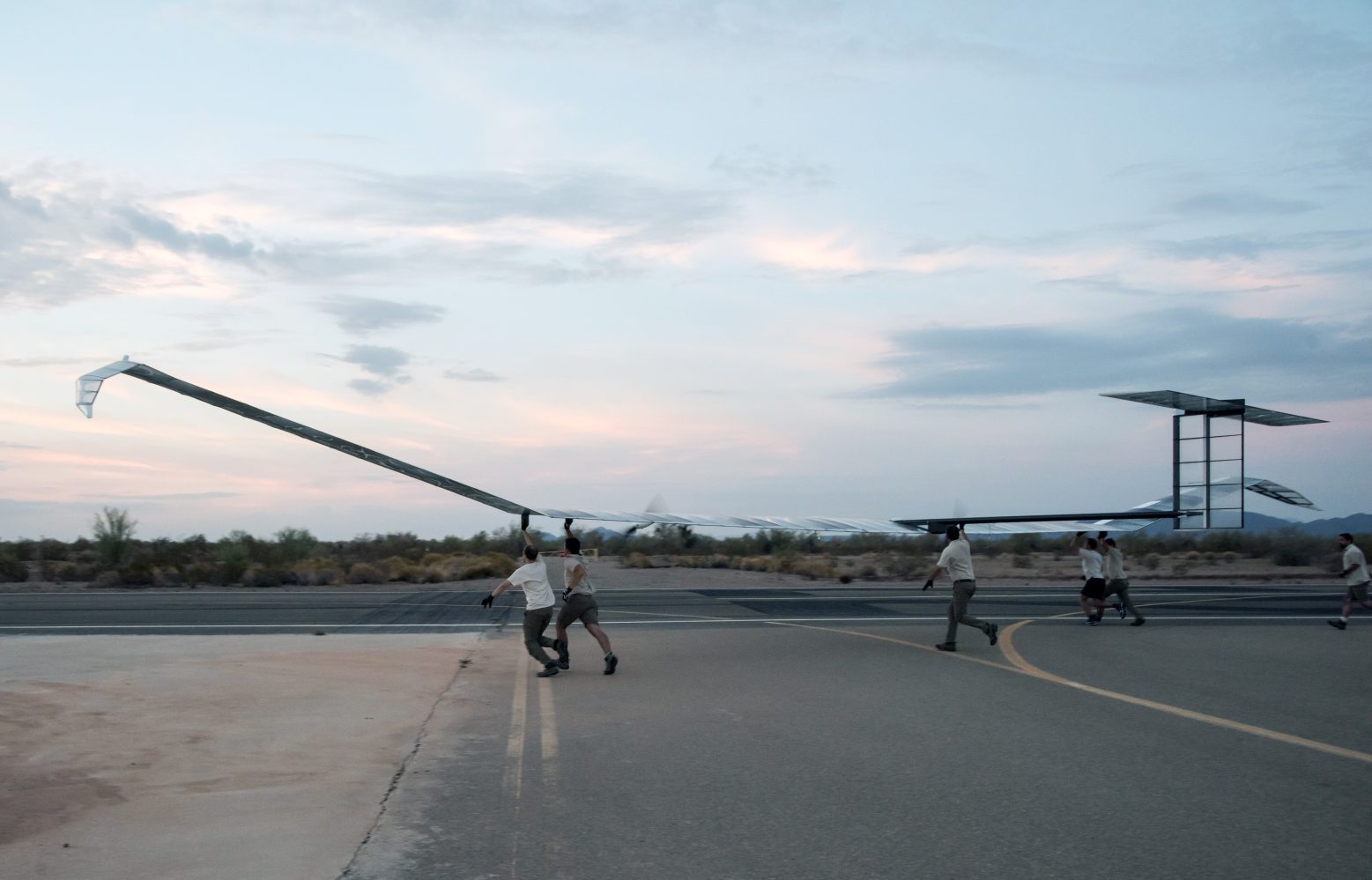
There’s no longer any question about whether the US Army’s experimental flight of the solar-powered Zephyr UAV will break the aerial endurance record, only by how much the craft will shatter that mark with each additional day it remains aloft.
The US Army launched the Airbus produced Zephyr over the Arizona desert on June 15 with the objective of keeping the sun-driven UAV airborne for 30 days – long enough to add a few days to the old flight endurance record of 26. Little did they know just how game their bird would be. By the end of Monday, the craft will have powered itself through 53 days in the air, leading officials to admit they’re no longer really sure how long the giant craft will continue soaring overhead.
Zephyr has distinguished itself in previous testing by both the US Army and Airbus, including trials last autumn in which the stratospheric UAV flew a record 36 days in a pair of linked missions. During that outing, the craft – officially known as a high-altitude platform system (HAPS) – also set a new, 76,100-foot world record for altitude flight by a solar-power driven plane. Given those performances, the spindly drone’s current marathon outing shouldn’t be too surprising – however impressive it is.
Read more: Airbus says its solar-powered Zephyr HAPS drone set new records during summer tests
Airbus says the craft has a wingspan of 25 meters – entirely covered with solar panels – a total weight of 75 kg, and is equipped with frontline and secondary batteries that alternate when the sun is no longer shining on its position. Because of those reserves, Zephyr requires no additional fuel, and can theoretically stay aloft for months at a time. Or now make that, “can demonstrably keep flying for months on end.”
Officials say even if the UAV can only hang tough another few days, that will be enough for it to surpass the 60-day goal the US Army had already set for the next test outing they’d planned for Zephyr. With current estimates indicating the craft probably has another week in its wings (if not more), that next mission plan will clearly need serious revising.
Its continued flight is all the more impressive due to the lower altitudes at which the UAV has been operating. Designed to swoop in the stratosphere at 60,000 to 70,000 feet, the Army has been cruising Zephyr at about half of that, where tropospheric elements like wind and rain pose more risks to the craft. Indeed, one 2021 test flight in Western Australia ended after unstable conditions caused the plane to break apart and fall to earth.
Read: New BAE ‘pseudo satellite’ can remain aloft at 70,000 feet for a year
There has been none of that bad luck this time out over Arizona, however, which has allowed Zephyr to offer another, dramatic example of how its category of stratospheric data-gathering and transmitting UAVs have been swiftly improving in tests by Airbus and the US Army.
“Ultra-long endurance (uncrewed) platforms have the potential to provide significant military capabilities and enhanced confidence as part of the Army’s diversified multi-layered architecture,” said Michael Monteleone, director of the Assured Position, Navigation and Timing/Space Cross-Functional Team. “We have seen incredible progress in high-altitude platforms in recent years. This experimentation allows us to build on that knowledge by demonstrating multiple payload types, fully exploring the military utility of stratospheric operations, and modernizing areas of deep sensing, long-range targeting, and resilient communications.”
FTC: We use income earning auto affiliate links. More.



Comments